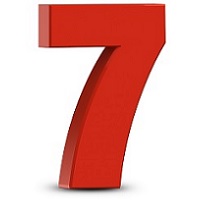 It’s Day 7 of our 12 Days of Christmas Posts and we bring you a special guest post, “Seven Swans a Swimming” Signals New Era of Health Data Exchange in 2019
It’s Day 7 of our 12 Days of Christmas Posts and we bring you a special guest post, “Seven Swans a Swimming” Signals New Era of Health Data Exchange in 2019
The line “seven swans a swimming” from the classic Twelve Days of Christmas has been on my mind lately. I see swans gliding past my house on the Chesapeake Bay during the day, and hear them always “cooing” at night, as I drift off to sleep.
 By Buff Colchagoff, CEO, RosettaHealth
By Buff Colchagoff, CEO, RosettaHealth
Twitter: @rosettahealth
Twitter: @BuffColchagoff
What does this have to do with Health IT? Well, swans symbolize grace and beauty – and over the past year there have been many swan-ly signs in the area of health data exchange:
Swan #1 – The Amount of Records Moving is Dramatically Increasing: During the first quarter of 2018, DirectTrust saw health data exchange transactions hit 47.8 million, an increase of approximately 90 percent over the same timeframe in 2017. The types of exchanges are also expanding – moving outside their seminal “transitions of care.”
Swan #2 – Networks Are Expanding and Becoming Standardized: It’s not just DirectTrust, other networks are accelerating as well. The CommonWell and Carequality partnership is becoming a significantly represented network where providers can query and retrieve electronic health records for others regardless of which vendor they use.
Swan #3 – Consumers Are Finally in the Game: Consumer access is now more than a novelty. Apple made waves by bringing easy access to patient records from EHRs to the iPhone via its Health App. The Apple Health Records EHR data viewer leverages new FHIR interfaces to enable secure patient access to health data from several sources.
Swan #4 – Public Health Reporting is Becoming Automated: The CDC’s National Healthcare Safety Network (NHSN) is the nation’s most widely used healthcare-associated infection tracking system. Automatic submission of data to this network is now built into some of the larger inpatient EHRs. Special interfaces or configurations are no longer needed to report on the nation’s health.
Swan #5 – Health IT Becomes Agile and Less Monolithic: Health IT is becoming less centralized. The role of the CIO is changing, allowing professionals closer to the business case to make IT decisions. Additionally, there are also more vendor options to choose from. This has led to competition and innovation in Health IT. Cumbersome, monolithic IT systems are going by the wayside, allowing care organizations to more easily adopt and leverage innovation.
Swan #6 – Pricing is Coming Down Thanks to Commodization: With more vendor competition in the marketplace, care organizations can now take advantage of more cost-effective solutions. As an example, the HIT market no longer treats connectivity as a cottage industry – with custom point-to-point connections. Today’s SAAS-based interoperability solutions are commoditizing connectivity. In one area, the Health Information Service Provider (HISP) market, the pricing of connections at scale has been reduced to 25 percent of what they were when Meaningful Use Stage 2 started.
Swan #7 – The Era of Cloud-Based Interoperability Transport is Simplifying and Expanding Exchange: At the beginning of this decade, locally hosted interoperability solutions made connections to exchange partners and networks expensive and complex. Today’s cloud-based platforms have matured exchange technologies to the point were connectivity is fast, simple, and sold as a service, rather than a local IT resource hog. These cloud-based solutions allow transactions to scale with little effort.
The indicators point to health data exchange becoming cheaper, simpler, and more common. We look forward to seeing these swans take flight in 2019! Happy holidays!
